Crowdfunding Success Stories
Top 10 Crowdfundng Success Stories in Gaming!
As the gaming industry continues to grow, the importance of crowdfunding is becoming increasingly apparent. Corporations hate uncertainty and publicly traded companies are beholden to their investors, so it can be difficult for developers to convince publishers to take risks. Crowdfunding platforms give developers the ability to raise capital without having to rely on mega corporations or traditional finance systems. These platforms give the fans the power to choose which projects are brought to life. A lot of crowdfunded projects crash and burn, however, and the entire system has been perverted by grifters and charlatans. At the same time, there are many great games that wouldn’t have seen the light of day without sites like Kickstarter to prop them up. For the purpose of this list, we’re looking for the most successful crowdfunded games and not necessarily the best crowdfunded games. Critical and commercial success will be into account, and we’ll also consider how important the crowdfunding model was to each project. In essence, we’re looking for games that justify the existence of crowdfunding platforms.
10
Superhot
2016
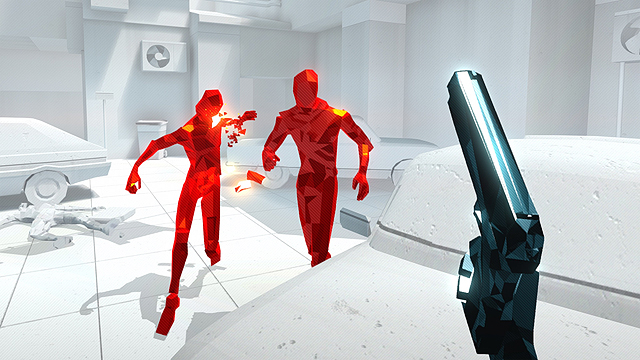
The film industry is dominated by sequels and reboots because movie studios are afraid to take risks on something new. The gaming world isn’t quite as bad in this regard, but the warning signs of sequelitis are starting to manifest themselves. Kickstarter has launched its fair share of overdue sequels and spiritual successors over the years, but it has also given visibility to brand new ideas. Superhot is a first-person shooter with a huge twist: Time only progresses when the player is moving! This gives the player an opportunity to stop and analyze their situation before deciding how they want to proceed. Everything plays out in slow motion until the player starts to move, so the game rewards situational awareness. You’ll have plenty of time to avoid enemy fire if you take inventory of your surroundings, but you’ll put yourself at a disadvantage if you wander around aimlessly or spend too much time looking around. The minimalist art style makes it easy to focus on the action and improvise strategies, and each enemy you face is a new puzzle to solve. Superhot was originally developed for a “7 Day FPS Challenge” before being released as a free browser game. After they were approved for distribution on Steam, the development team launched a Kickstarter campaign in 2014. The project reached its funding goal on its first day, and the campaign ended with $230,000 in pledges. The team used the money to create new levels, improve the art design, and add VR support for Oculus Rift. Big publishers can’t always see the potential in games like Superhot, but gamers value innovation and will happily open up their wallets for something new and exciting.
9
Kingdom Come: Deliverance
2018
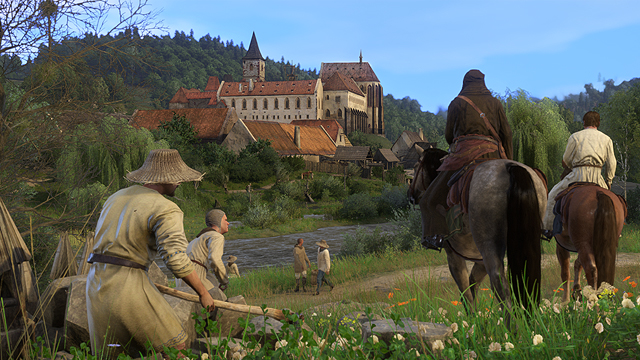
Kingdom Come: Deliverance is an open world RPG with a medieval setting and a focus on realism. While other games in the genre typically rely on fantastical elements like magic spells or dragons, Kingdom Come: Deliverance strives for historical accuracy. Players need to eat and sleep to remain healthy, equipment wears out, and food will spoil if you don’t eat it in time. The weight and speed of your weapons determines how effective they are, and your combat options don’t extend beyond the capabilities of normal humans. Even the dialogue trees aim for realism, and you don’t have an infinite amount of time to respond during conversations. Kingdom Come: Deliverance was an ambitious game, but it had no problem reaching its £300,000 Kickstarter goal in 2014. The game raised £1,106,371 through Kickstarter, and the crowdfunding efforts continued off-site in the months that followed. By October 2014, the game had raised over $2,000,000 USD from nearly 39,000 backers. The fans continued to support the game after it was released, and it sold over two million copies in its first year! Prior to its release, an outrage mob complained about the lack of minorities in the game. When Daniel Vávra (who wrote and directed the game) educated the mob about the demographics of 15th-century Bohemia, they became unhinged. Since Vávra had gone the crowdfunding route instead of accepting a check from a publisher, he was immune to the impotent rage. Game publishers often try to appease groups that have no intention of buying their products, but Vávra was in a position to stand up for himself. The success of Kingdom Come: Deliverance illustrates how important it is for developers to retain creative control, and platforms like Kickstarter allow developers to keep their artistic integrity.
8
Divinity: Original Sin
2014
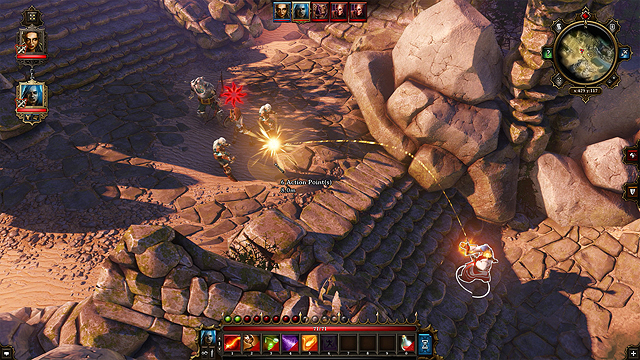
Kickstarter helps get new projects off the ground, but it can also rescue projects that have stalled during the development process. This is the case for Divinity: Original Sin. The game was funded internally during the early stages, but Larian Studios ran out of money in 2013. After launching a Kickstarter campaign, they were able to secure nearly a million dollars in additional capital. These funds were used to expand upon their original vision, and the game was met with commercial and critical success upon its release in 2014. If you’re unfamiliar with the game, Divinity: Original Sin is a turn-based CRPG with that offers near limitless strategic freedom. The game allows for two different players to control separate characters, and a “rock, paper, scissors” mini-game allows both of them to make decisions in the game’s world. A lot of games feature co-op battles, but it’s rare for a game to offer co-op dialogue trees. If you count spinoffs, Divinity: Original Sin was the fifth game in the series. You might question if the crowdfunding efforts were really necessary, but the game helped rejuvenate the franchise and the Kickstarter campaign helped Larian Studios to build a player community before the game even launched. The campaign was so successful that they decided to take Divinity: Original Sin II to Kickstarter as well. It took less than 12 hours for the sequel to reach its $500,000 goal, and that speaks volumes about how satisfied fans were with its predecessor.
7
Pillars of Eternity
2015
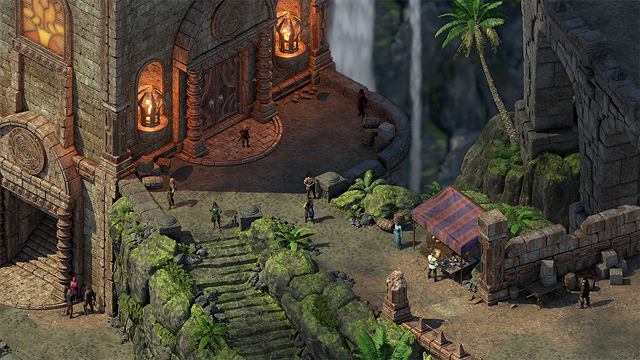
A fantasy RPG with pre-rendered backgrounds and a fixed isometric perspective, Pillars of Eternity hearkens back to games like Baldur’s Gate, Icewind Dale, and Planescape: Torment. The “real-time-with-pause” combat allows for a high level of customization, and the battles have tremendous depth. The character classes could be likened to Dungeons & Dragons, and the skills assigned to the player-created characters have a meaningful impact on how the adventure unfolds. The choices you make at the beginning of the game will affect everything from battle strategies to dialogue options. The game doesn’t reward experience points for killing enemies, so it’s worthwhile to use stealth or other non-violent approaches instead of grinding for hours. Pillars of Eternity lives up to the games that inspired it, and it was met with universal critical acclaim upon its release in 2015. When Obsidian Entertainment began their crowdfunding campaign in September 2012, they were seeking $1.1 million. They reached this goal within 24 hours, so they promptly added new “stretch goals” to draw in more investors. When the month was over, they had secured nearly $4 million in funding — which was the most successful video game project to ever appear on Kickstarter at that point in time. Obsidian had experience with major IPs like Star Wars and Fallout, but big-time publishers are not always willing to fund passion projects. Pillars of Eternity ended up selling over 700,000 copies on PC alone, but it wouldn’t have seen the light of day if Obsidian had to fund the game through traditional means.
6
Project CARS
2015
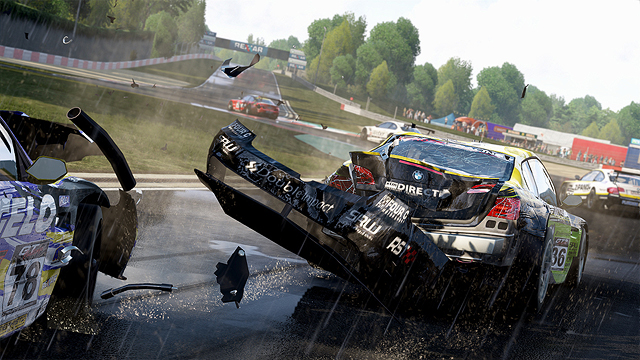
Gran Turismo is arguably Sony’s biggest gaming franchise, and Forza has been one of the pillars of the Xbox brand for nearly 15 years. It’s remarkable for an indie developer like Slightly Mad Studios to even be mentioned in the same discussion. I overlooked Project CARS on an earlier rendition of this list, but it should be acknowledged for its unique approach to crowdfunding. Project CARS actually stands for “Community Assisted Racing Simulator,” and the folks at Slightly Mad Studios set out to redefine the player-developer relationship. In lieu of promoting their game through an established platform like Kickstarter, the developers created their own crowdfunding portal called World of Mass Development. Contributors would be granted early access to the game’s newest builds, and their feedback would directly influence the game’s development. Slightly Mad even promised to share revenue with backers if the game turned a profit, and the project eventually raised over five million dollars from 80,000 fans. (There are strict regulations in the UK with respect to collective investment schemes, however, so the Financial Conduct Authority forced Slightly Mad Studios to stop accepting new backers and to offer refunds to those already involved.) The FCA’s concerns were not without merit, but gamers were happy to embrace the vision of a racing sim co-funded (and co-created) by the community. The developers had promised “the most authentic, beautiful, intense, and technically-advanced racing game on the planet,” and the features included an ambitious career mode, dynamic time of day and weather systems, and Oculus Rift support. The finished project featured 74 drivable cars, more than 30 unique locations, and over 100 track layouts. It was amazing that an indie studio managed to secure the licensing rights for so many car manufacturers, and the game even featured vehicle damage! The game (which was distributed by Bandai Namco Entertainment) sold over a million copies in its first month and reached the two-million milestone the following year. It didn’t make as big of an impact as Gran Turismo or Forza, but it was a solid enough foundation to build a franchise on.
5
Bloodstained
2019
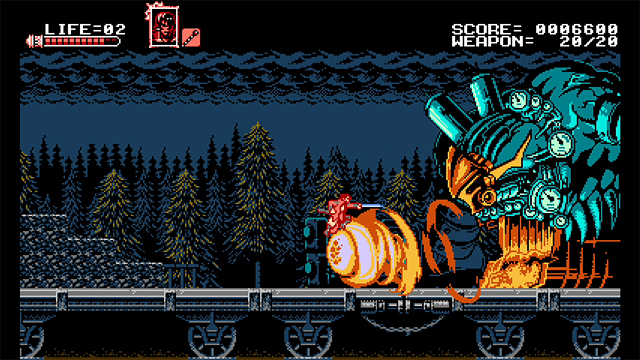
Koji Igarashi’s Castlevania titles were genre-defining games, and Symphony of the Night ranks among the best games ever made. Following his departure from Konami in 2014, Igarashi was inundated with requests from fans who wanted new entries in the Castlevania series. His employment situation made it impossible to fulfill these requests, so he set forth to make a new game with a similar theme and gameplay mechanics. He pitched Bloodstained: Ritual of the Night to over twenty publishers, but they all turned him down. Although the projected budget was modest, the industry big wigs didn’t think there was a market for the proposed game. With no other option, Igarashi launched a Kickstarter campaign to demonstrate the demand to potential investors. It took only four hours to reach the $500,000 goal, and the project had amassed $1.5 million by the end of the first day! The funding reached a record-setting $5.5 million by the end of the campaign, and various stretch goals were added along the way. Unfortunately, the proposed Wii U and Vita versions of Ritual of the Night were cancelled, the Nintendo Switch version was half-baked, and the game took nearly five years to complete. It wasn’t all smooth sailing, but the campaign did have it upsides. One of the stretch goal rewards was a retro-style companion game called Bloodstained: Curse of the Moon. (This game looked and played like an 8-bit NES Castlevania title, and it was a perfect compliment to Ritual of the Night‘s modern approach.) Ritual of the Night was the main course, but I was taken aback by how authentic Curse of the Moon was. With that in mind, this entry is effectively recognizing both Bloodstained games.
4
Wasteland 2
2003
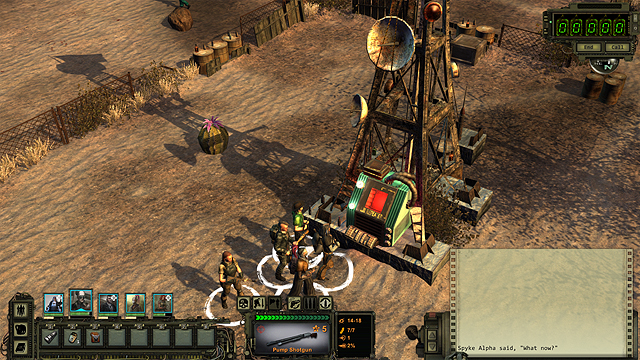
Wasteland is an open world RPG set in a post-apocalyptic America destroyed by a nuclear holocaust. The game spent five years in development before launching in 1988, and it became a huge hit. The developers at Interplay intended to create a sequel, but Electronic Arts was unwilling to relinquish the rights. With no other option, Interplay decided to release a spiritual successor with a similar setting and gameplay mechanics. This game was Fallout, and it made an even bigger impact than Wasteland did. The first two Fallout games were hugely successful, and the series became even more popular after it made the jump to 3D with the release of Fallout 3 in 2008. If you ever wondered what Fallout 3 would have been like if it retained the isometric view and turn-based combat that its predecessors used, then Wasteland 2 is the game for you! It works as a direct sequel to the original Wasteland, but it also feels like a version of Fallout 3 from an alternate timeline. In 2003, inXile Entertainment — founded by Wasteland‘s producer Brian Fargo — acquired the rights to Wasteland after they had lapsed. A potential sequel remained in limbo for nearly a decade before a Kickstarter page went live in March 2012. Fargo set a lofty goal of $900,000 — the largest ever for a Kickstarter video game campaign at that time — and they exceeded this target in 43 hours! When the Kickstarter ended on April 17, it had raised a total of $2,933,252, with an additional $107,152 in PayPal pledges. It’s rare for a sequel to emerge 25 years after its predecessor, and I doubt Wasteland 2 would have ever been released if it wasn’t for Kickstarter.
3
A Hat in Time
2017
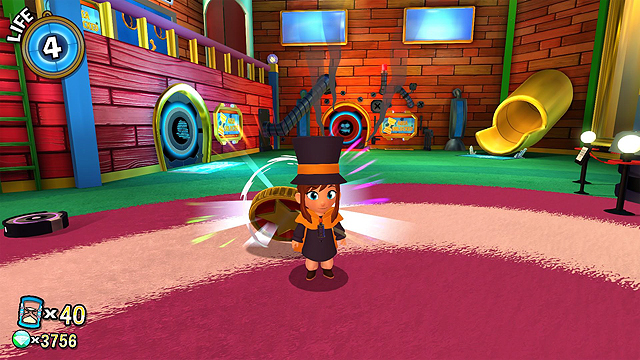
In 2014, a group of former Rare employees used Kickstarter to fund a spiritual successor to Banjo-Kazooie. Yooka-Laylee ultimately failed to live up to its pedigree, but there was another Kickstarter project from the previous year that actually delivered. Jonas Kærlev conceived A Hat in Time as a means of addressing an perceived shortage of 3D platformers. He sought only $30,000 through Kickstarter, and he doubled the goal within two days. (He wound up raising $296,360 from over 9,000 backers.) Kærlev’s team at Gears For Breakfast expanded during the development phase, and volunteers from four different countries offered their expertise. A Hat in Time is a love letter to GameCube-era platformers like Super Mario Sunshine, but it’s not simply a poor facsimile. The premise is inventive, the characters are unique, and the environments are incredibly varied. Whether you’re sneaking onto movie sets, solving murder mysteries, or playing impromptu rounds of patty-cake with mafiosos, the scenarios are overflowing with personality. Hat Kid turned out to be one of gaming’s most charismatic heroines, and it was impossible not to root for her. The developers of A Hat in Time promised us a platformer that was as “cute as heck,” and they certainly delivered. Jonas Kærlev didn’t think the Kickstarter campaign would catch on, but he had nothing to worry about. The game ended up selling in excess of a million copies within its first year!
2
Shovel Knight
2014
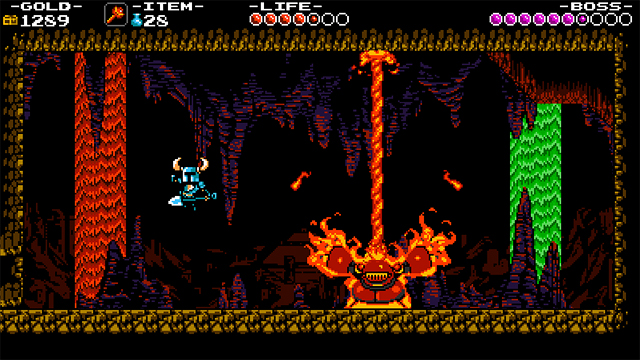
Shovel Knight is a side-scrolling platform game that’s inspired by classic NES titles. It features a chiptune soundtack, an intentionally limited color pallet, and gameplay mechanics that were lifted from games like Zelda II, Castlevania, Mega Man, and DuckTales. (Some journalists even compared it to Dark Souls, but they didn’t realize that difficult games weren’t uncommon during the 8-bit era.) As its name suggests, Shovel Knight centers around a brave adventurer who arms himself with a shovel. The shovel is used to dig up treasure, and it also functions as a makeshift sword or pogo stick. It’s an unconventional weapon to be certain, but it’s hard not to be impressed by the its versatility. Shovel Knight felt like a trip down memory lane, and its success opened the floodgates for similar retro-inspired games. Yacht Club Games set a goal of $75,000 for their Kickstarter campaign, and they ended up raising $311,502. It might sound like hyperbole, but Shovel Knight is one of the most important indie titles of all-time. The game proves that you can be successful without the backing of a giant studio, and that’s what crowdfunding is all about. Best of all, Yacht Club Games actually delivered on all of their promises, and several additional campaigns (which had been promised as stretch goals) were rolled out in the years following the initial release.
1
Undertale
2015

Undertale is a quirky RPG that was developed on Game Maker: Studio. Toby Fox worked on several EarthBound ROM hacks in high school before making a game of his own, and the Mother influence is immediately apparent in his work. He wasn’t especially fond of most RPG battle systems, however, so he drew inspiration from Super Mario RPG and Superstar Saga and found ways to keep players engaged during the battles. The combat mechanics borrow heavily from shoot ’em ups and platformers, and players are tasked with protecting a heart-shaped avatar that represents their soul. It’s one of the most creative battle systems I’ve seen in an RPG. Another unique aspect about the game is how it encourages players to befriend their enemies rather than resorting to violence. Each battle gives you an opportunity to spare your opponent, and this requires a certain degree of puzzle-solving. Undertale is relatively short, but it’s never boring and the replay value is off the charts. The charming characters, creative combat, and catchy tunes will keep you entertained from beginning to end. The whole thing plays out like an extended meme, but I was surprised by how much I actually cared about the characters and the world they lived in. Undertale‘s Kickstarter campaign began on June 25, 2013 with a goal $5,000. When the campaign ended a month later, the project had raised $51,124. The game ended up being a much bigger deal than its modest crowdfunding goals would suggest, however. Against all odds, Undertale ended up selling millions of copies and picked up numerous Game of the Year awards in the process. It sounds dramatic, but the unprecedented success of Undertale added validity to Kickstarter and similar crowdfunding platforms.

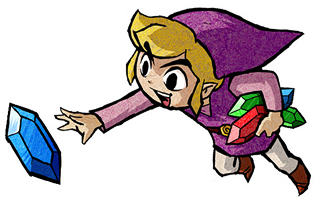
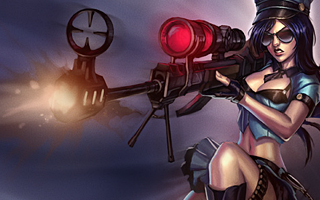
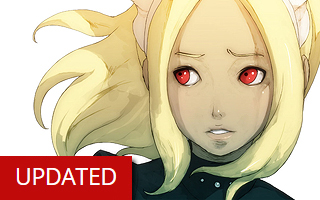
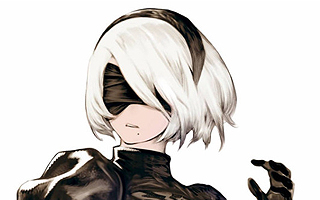
Do you agree with this list? Let us know what you think by leaving a comment below. Your opinion matters!